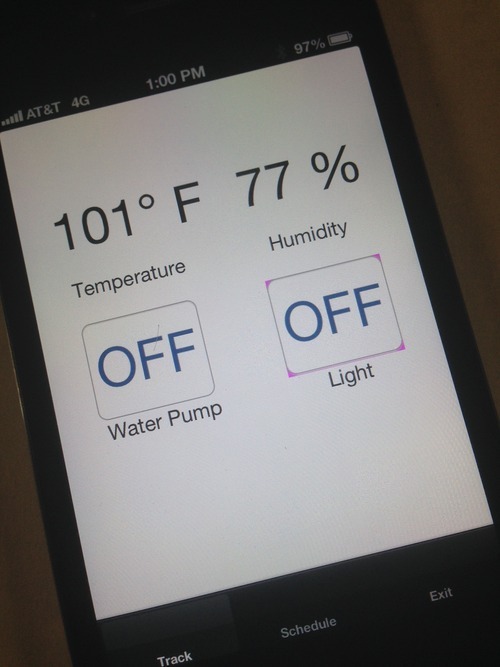Electric Imp recently sent a crack team of makers down to Santa Monica to hack at the AT&T Internet of Things Hackathon and Accelerator Series. Over the course of 14 hours we soldered, dremeled, and coded our way to a connected terrarium, and then found a nice kale plant to live in our terrarium of the future. During the Hackathon, we also discovered there are some terrarium elitists who will tell you that placing a kale plant inside a tupperware container does not constitute a “real” terrarium.

We’ll just have to agree to disagree.
Meet Megan the Kale
Megan the Kale bravely volunteered to be the test subject for our terrarium. Megan’s home is automated – we can schedule when the lights turn on and off, what color the lights are, and how much water gets pumped in each day. Along with automating Megan’s home, we also tracked the temperature and humidity inside the terrarium. All of this is, of course, was controlled by an imp.
Connected Science!
The aim of the project wasn’t just to build a connected terrarium, but to explore how the Internet of Things might be used in a classroom setting. The grand vision of our project was that hundreds or thousands of classrooms might have these connected terrariums. The students would be able to compare their terrarium’s schedule and results with those of other classrooms to learn interesting things.


Students could create an experiment and have other classrooms run an identical setup, then compare results. For instance, a student might want to find out what happens when the plant is ONLY given green light. Rather than running the experiment once, they could have multiple terrariums across the world running the same experiment to compare results with.
Other Imps!
Our favorite imp hack at the event was from a developer who used Siri, Twilio, and an imp to control a robotic arm through voice commands. He used Siri to send text messages to Gretchen, his ‘virtual assistant’ (in actuality just a Twilio phone number), which forwarded the messages to the imp’s agent. Once the agent had the text message, it could process it for keywords, and then send commands to the device to manipulate the hardware.
What blew me away about this project wasn’t what he did (although I really love robots, and it was really cool), but how he went about doing it. By assigning a Twilio phone number to a contact in his iPhone he was able to make a much more personal and engaging interface for his device. This is what hackathons are all about!
If you want to spend a day hacking with some of the folks from Electric Imp and New Relic, sign up the upcoming Electric Imp Hackathon in San Francisco on December 7.
Happy coding,
Matt Haines
Community Manager